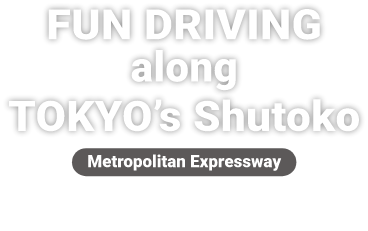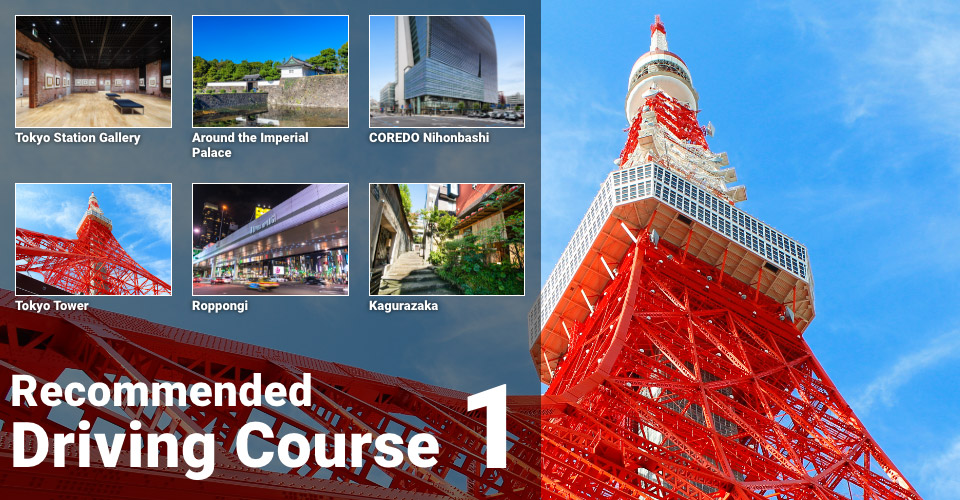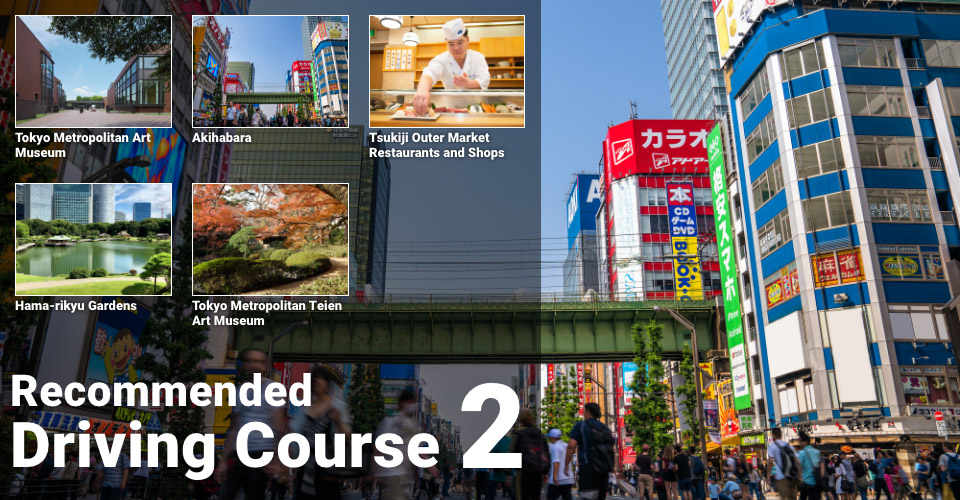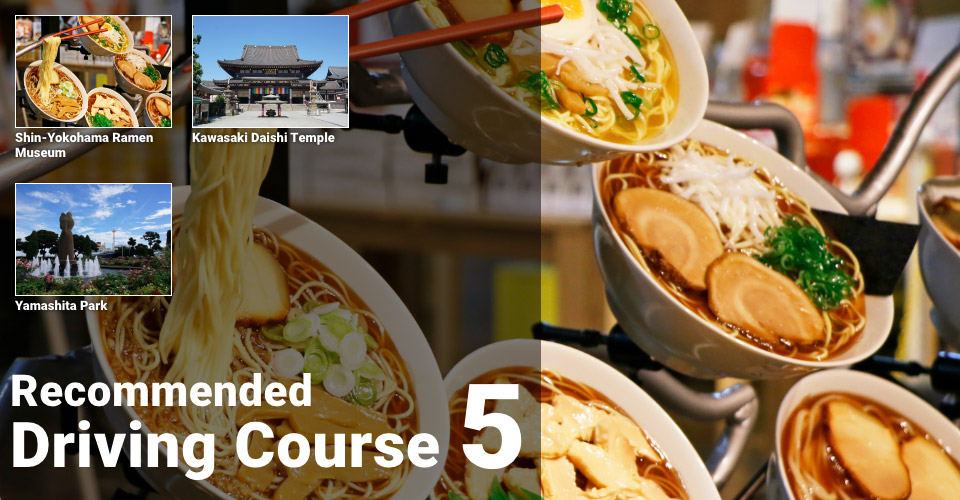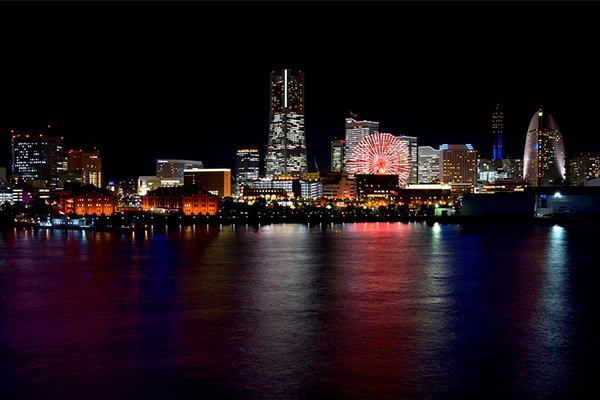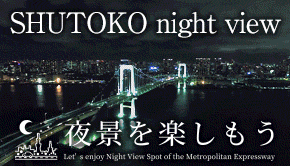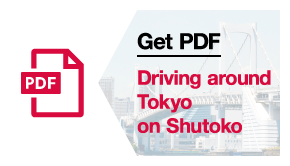What is SHUTOKO
Metropolitan Expressway
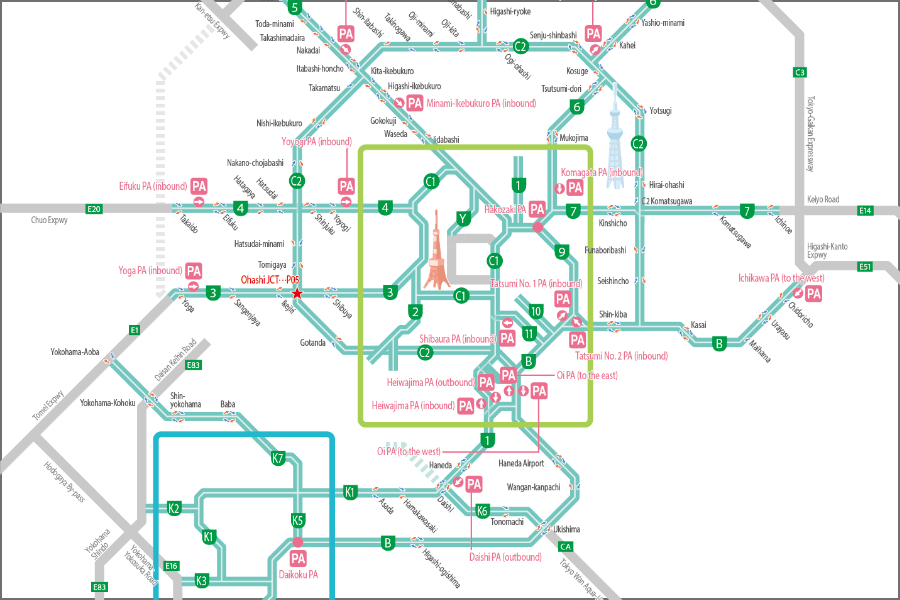
The Metropolitan Expressway is a network of vehicle-only toll roads constructed to facilitate the smooth flow of Tokyo's traffic. The network plays an important role as a hub of the metropolitan area and is essential for driving in and around the capital.
Recommended Driving Spots
Metropolitan Expressway
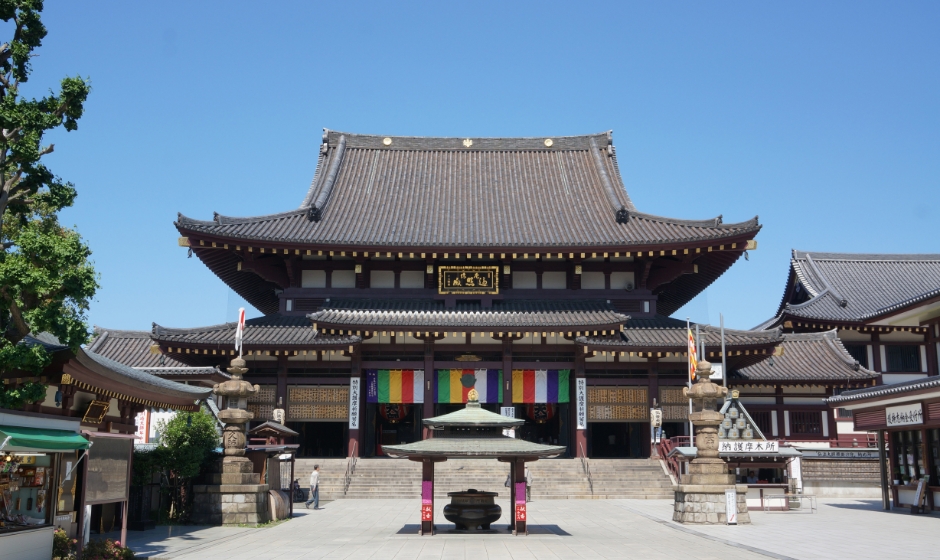
Kawasaki Daishi Temple
A temple of Shingon Buddhism's Chizan sect established in 1128. Along with Naritasan Shinsho-ji Temple and Takaosan Yakuo-in Temple, it is one of the head temples of Shingon Buddhism's Chizan sect. Known as "Daishi, expeller of bad fortune," which does away with various kinds of calamities, it is bustling with visitors from all over Japan for their first temple visit of the year. Many shops are lined along the approach, allowing people to enjoy shopping and eating as they visit the temple.

Harajuku
The area surrounding JR Harajuku Station, it is also near Meiji-jingu Shrine. Continuing to develop every day as an area that leads youth culture and fashion, it is lined with a great number of shops selling fashion items, fashion accessories, sweets, and more. Takeshita Street, especially, is a popular spot known worldwide as the origin of "kawaii" culture.

Kagurazaka
An area in Tokyo's Shinjuku Ward. While in the city center, if you move a little from the main street into the back alleys, it opens up to a nostalgic and retro landscape. In the area, there are numerous appealing shops of all kinds, including fashionable cafes and restaurants, household item shops and more, making it recommended for taking a leisurely walk.
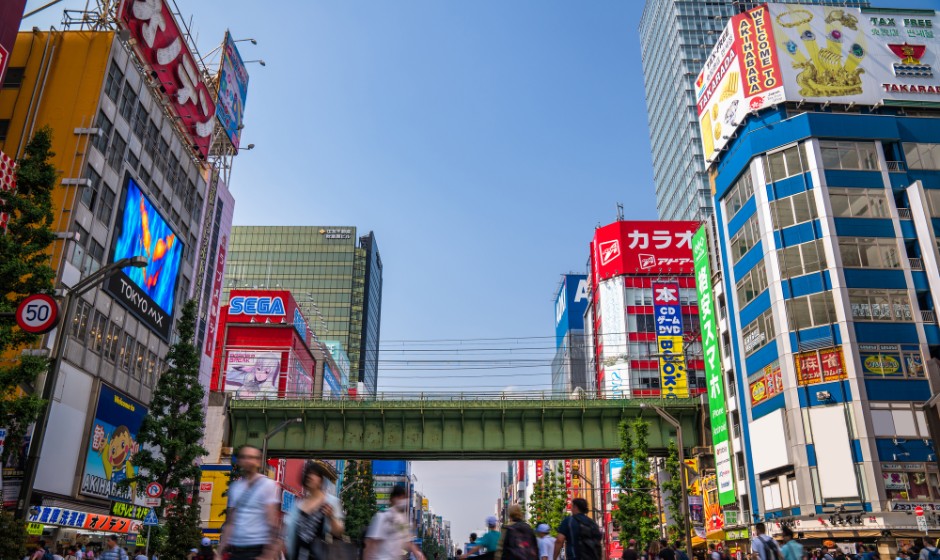
Akihabara
The area surrounding JR Akihabara Station. After World War II, the number of stores selling electric appliances and electronic equipment would grow and now it is visited by a great number of tourists as the world's best "Electric Town." While there were many electric appliance retail stores in the beginning, in adapting to the times, a wide variety of genres have come together, including music, video games, animation, idols, and more. It continues to be the source of Japanese pop culture.

Yokohama Chinatown
Lined with numerous Chinese restaurants and household item shops, it is one of Japan's leading Chinatowns, highly popular as a gourmet spot. Established a few years after the Port of Yokohama was opened at the end of the Edo period, it is highlighted by places full of Chinese flavor, starting with Kantei-byo Temple, which has undergone relocations and renovations four times and is still loved as the symbol of Yokohama Chinatown.

Kawagoe/Koedo
Kawagoe City, also called Koedo (Little Edo) for flourishing as the castle town of Kawagoe Castle, is an area where remnants of the Edo period still linger with its streets lined with warehouse style buildings. Along with its historical buildings, including Kita-in Temple, which was founded in 830, Time Bell Tower, which was reconstructed in the Meiji period, and more, you can also enjoy walking around to various shops that beam with Japanese culture.
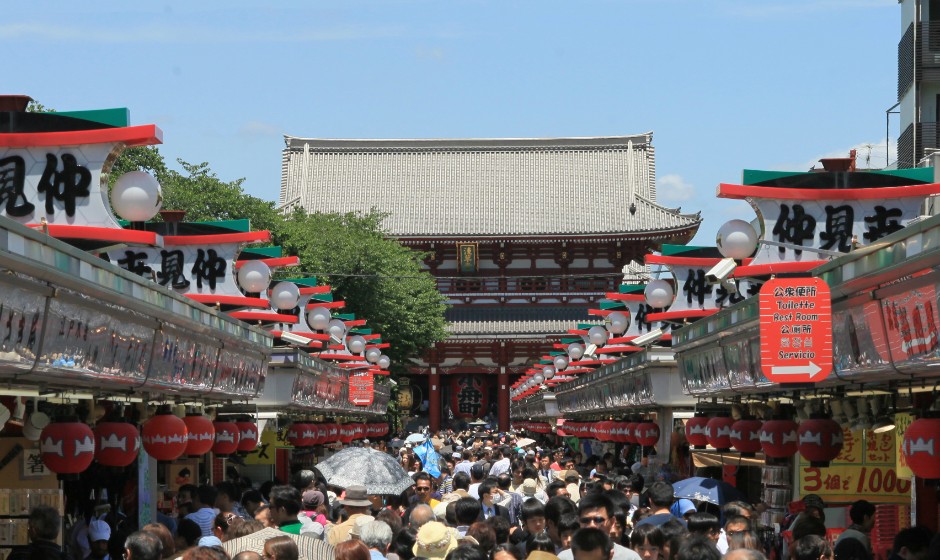
Nakamise
One of Japan's oldest shopping streets located in Tokyo's Asakusa. As the front approach to Senso-ji Temple, about 90 shops line an entire length of 250 meters from Kaminari-mon Gate to Nio-mon Gate. Each season, seasonal decorations are put up on the eaves of the shops, delighting the eyes of the temple visitors and the many tourists.
Recommended Driving Course
Metropolitan Expressway
We will introduce our recommended driving courses around tourist destinations and famous spots in Kanto. If there are any spots that look interesting, please give them a visit.
FAQ ABOUT SHUTOKO
Metropolitan Expressway
-
FAQ1

Metropolitan Expressway Toll Rates
Basic rates determined by toll distance
The basic rate for vehicles using ETC is 10 yen per 0.1 km toll distance. There are maximum and minimum tolls, however, the maximum being 1,950 yen and the minimum 300 yen in the case of ordinary cars. If the driver pays in cash, except for some sections, the rate is 1,950 yen for ordinary cars.
-
FAQ2
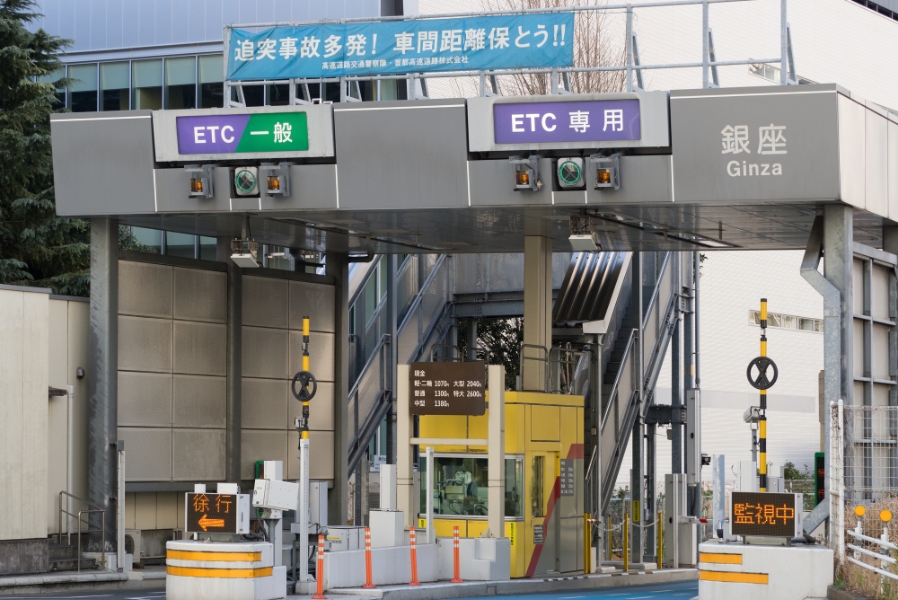
How to Use ETC
System of payment without stopping at toll gate
When using electronic toll collection (ETC), it is necessary to have an in-vehicle ETC device and an ETC card. Since an ETC card is a credit card service exclusive to Japan, you are recommended to rent one when renting a car. In a vehicle with a preinstalled card, you can pass through the special gate at a speed of under 20 kph.
-
FAQ3
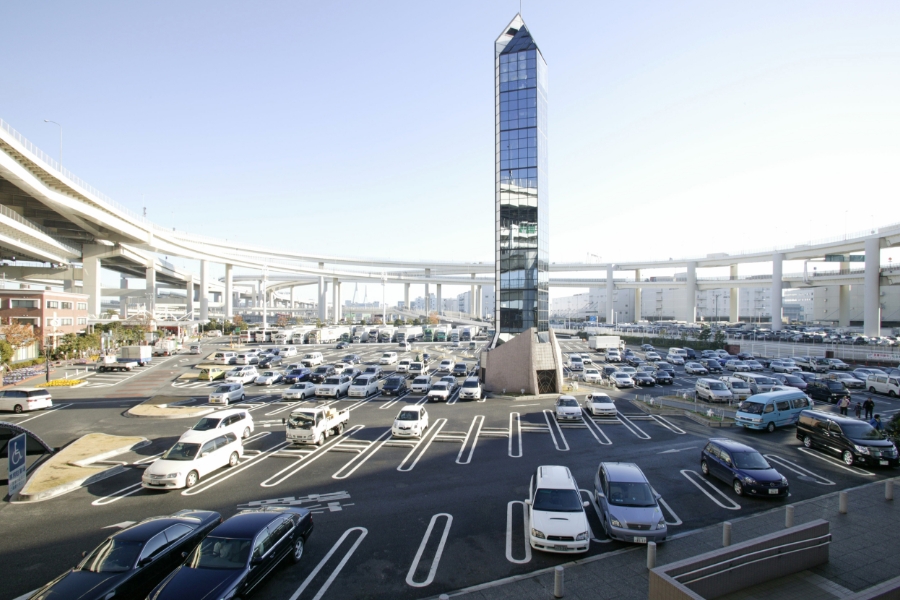
Parking Area and Other Services
Use facilities to take a rest from driving if tired
The Metropolitan Expressway network has parking areas for taking a rest. All parking areas have toilets, toilets for disabled persons, vending machines, and disabled parking space. Some parking areas also have restaurants, convenience stores, information corners, fast electric vehicle chargers, automated external defibrillators (AEDs), automated teller machines (ATMs), etc. Check the map to see where they are.
-
FAQ4

Checking Routes, Tolls, and Traffic Conditions
Smartphone app "mew-ti"
If you use this smartphone app, you can immediately check traffic conditions and other information supplied by Metropolitan Expressway Co. via the Internet. You can also search routes to your destination. Major functions are available in English as well as Japanese, and the language switch is easy. The app can be downloaded free of charge from the site.
OTHER NOTES
-

Basic Metropolitan Expressway Rules
Minimum knowledge required for driving on the Metropolitan Expressway
Understanding rules for a vehicle-only road
Pedestrians and cyclists cannot use vehicle-only roads. Drivers can only proceed in the designated direction; driving in the opposite direction is forbidden. It is prohibited to stop on the expressway except at designated places or to avoid an emergency. Except for designated cases, maximum speed is 60 kph.
-

Basic Traffic Rules in Japan
Minimum knowledge required for driving on roads in Japan
Driving with care so as not to violate laws and ordinances
To drive in Japan, it is necessary to have a valid driving license (Japanese driving license or international driving license). Drivers and passengers are obliged to fasten their seatbelts at all times. It is obligatory to use child seats for children under the age of six. Vehicles drive on the left side of the road. Pedestrians have the right of way at all times. Driving under the influence of alcohol, illegal drugs, etc. is severely punished.
-

How to Rent a Car
Moving around comfortably by rented car
Visitors from overseas are recommended to make arrangements before their arrival in Japan to facilitate procedures
To rent a car, foreigners need a valid Japanese driving license or international driving license and a passport. Payment is by credit card in principle, although payment by cash is also possible in some cases. Japan's main car rental companies accept online reservations, so you are recommended to make arrangements before your departure.
Night View Spots SHUTOKO
Metropolitan Expressway



